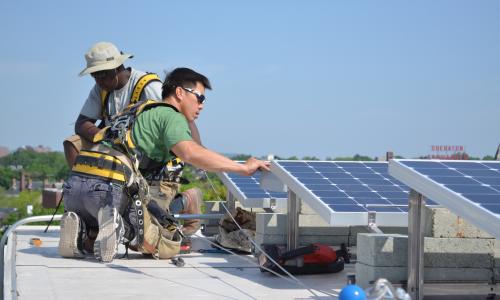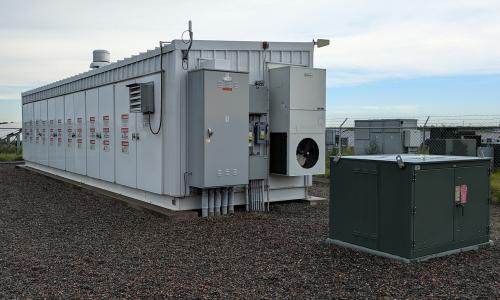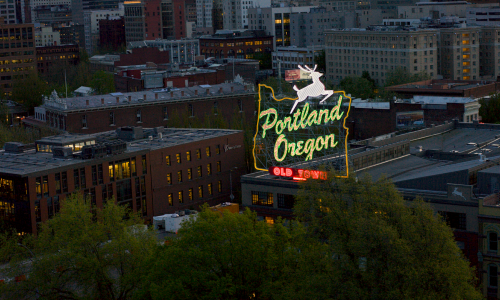Americans' per capita emissions of heat-trapping gases is 21 tons—four times the global average and twice that of other countries with a similar standard of living to our own, such as France and Japan. Given just how big a problem global warming is, solving it will require much more than individual action: we need system-wide change, and accountability from the companies who've contributed to, and covered up, the crisis.
But that doesn't mean individual actions can't make a difference—they absolutely can.
Reducing your heat-trapping emissions means making smart choices, using energy-efficient products, and understanding which areas of your life generate the most carbon emissions. What's more, making climate-friendly choices will save you money at the same time!
So here are the top ten things you can do to help tackle global warming:
- The car you drive: the most important personal climate decision.
When you buy your next car, look for the one with the best fuel economy in its class. Each gallon of gas you use is responsible for 25 pounds of heat-trapping gases in the atmosphere. Better gas mileage not only reduces global warming, but will also save you thousands of dollars at the pump over the life of the vehicle. Upgrading from a 20 mpg car to a 40 mpg car can save you 4,500 gallons of gasoline over the car’s life span. At today’s gas prices, that’s a total savings of more than $18,000. - Make your house more air tight.
Even in reasonably tight homes, air leaks may account for 15 to 25 percent of the heat our furnaces generate in winter or that our homes gain in summer. If you pay $1,100 a year to heat and cool your home, you might be wasting as much as $275 annually. Take advantage of the free home energy audits offered by many utilities, which can help you identify (and reduce) the most significant air leaks. - Buy and USE a programmable thermostat.
This can reduce your heating and cooling emissions by 15 percent and save you $180 a year. During the summer, a setting of 78 degrees Fahrenheit is optimal during the hours you are at home, and 85 degrees when you are away during the day. - Eat less meat, especially beef.
Food accounts for a sizable portion of our emissions. If you want to make cuts here, your best option is to reduce your consumption of meat, especially beef. That’s because a pound of beef is responsible for some 18 times the emissions of a pound of pasta. An average family of four that decides to cut their meat intake in half could avoid roughly three tons of emissions annually. - Use power strips in your home office and home entertainment center.
These will curb “phantom loads” and save a surprising amount on your electric bill. Keeping your laser printer turned on when not in use could be costing you as much as $130 annually. - Upgrade your refrigerator and air conditioner, especially if they are more than five years old.
New ones are twice as efficient or more. For fridges: if they’re old an upgrade can pay for itself in as little as three years in energy savings alone. Look for the Energy Star label when you shop for a new fridge or any other appliance, especially freezers, furnaces, air conditioners, and water heaters, which use the most energy). These items may cost a bit more initially, but the energy savings will pay back the extra investment within a couple of years. - Get an electricity monitor.
Identify where the energy hogs are in your home, which can help you save hundreds of dollars annually. Electricity monitors can be found at most hardware store or you may even be able to borrow one from your local library. - Change those light bulbs.
New LED light bulbs can give the same light for 15 percent the electricity. That adds up to more than $100 in savings for most families each year. - Wash clothes in cold water.
They get just as clean with today’s detergents. But hot water washes use five times the energy—and create five times the emissions. This could save you nearly $100 a year. - Buy less stuff.
Reduce, re-use, and recycle—it’s not just about pollution, but the strategy will lower your emissions too and help combat global warming.
And two more... - Let policy makers know you are concerned about global warming.
Our elected officials and business leaders need to hear from concerned citizens. Sign up for the Union of Concerned Scientists Action Network to ensure that policymakers get the timely, accurate information they need to make informed decisions about global warming solutions. - Spread the word.
If all Americans reduced their emissions by 20 percent we could shutter 200 of the nation’s 600 coal plants, a great step in fighting the worst consequences of climate change.




